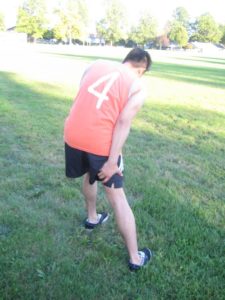Varicose eczema is defined as a long-standing skin condition affecting the lower legs. It is likely to affect individuals with varicose veins. It is generally a long-term condition but can be controlled with various treatment options.
What are the signs?
Similar with other forms of eczema, the affected area becomes:
- Itchy
- Reddened and swollen
- Flaky and dry
- Crusty or scaly
There are phases where the symptoms settle and become severe. The legs might appear engorged, especially at the end of the day or after prolonged periods of standing. Take note that varicose veins are often visible on the legs.

Other symptoms that might be present include the following:
- Brownish skin discoloration
- Reddened, taut and tender skin that hardens
- Pain or discomfort
- Small-sized, white scars
- Eczema that affect other regions of the body
If left untreated, leg ulcers might form. These are lingering wounds that develop in areas where the skin is damaged.
What are the causes?
Varicose eczema is typically brought about by increased pressure in the leg veins. Once the small valves in the veins ceases to function properly, it is hard for the blood to be driven upwards against gravity and leaks backwards.
This results to increased pressure in the veins that causes fluid to seep into the adjacent tissue. The condition is prevalent among individuals with varicose veins since it is often an indication that the leg veins are not functioning properly anymore.
Management of varicose eczema
Generally, the treatment involves a combination of the following:
- Self-care measures – includes measures to improve circulation such as staying active and regularly elevating the legs
- Emollients – these are moisturizers that are dabbed on the skin to avert dryness
- Compression stockings – these are specially designed stockings that are used daily which squeeze the legs tautly at the foot and ankle area and loosens as it moves up the leg to improve the circulation
- Topical corticosteroids – ointments or creams can be applied on the skin to manage the condition as well as relieve the symptoms
In case these treatment options fail to work, the doctor might refer the individual to a dermatologist if there is another cause of the symptoms or if worried about having contact dermatitis.
